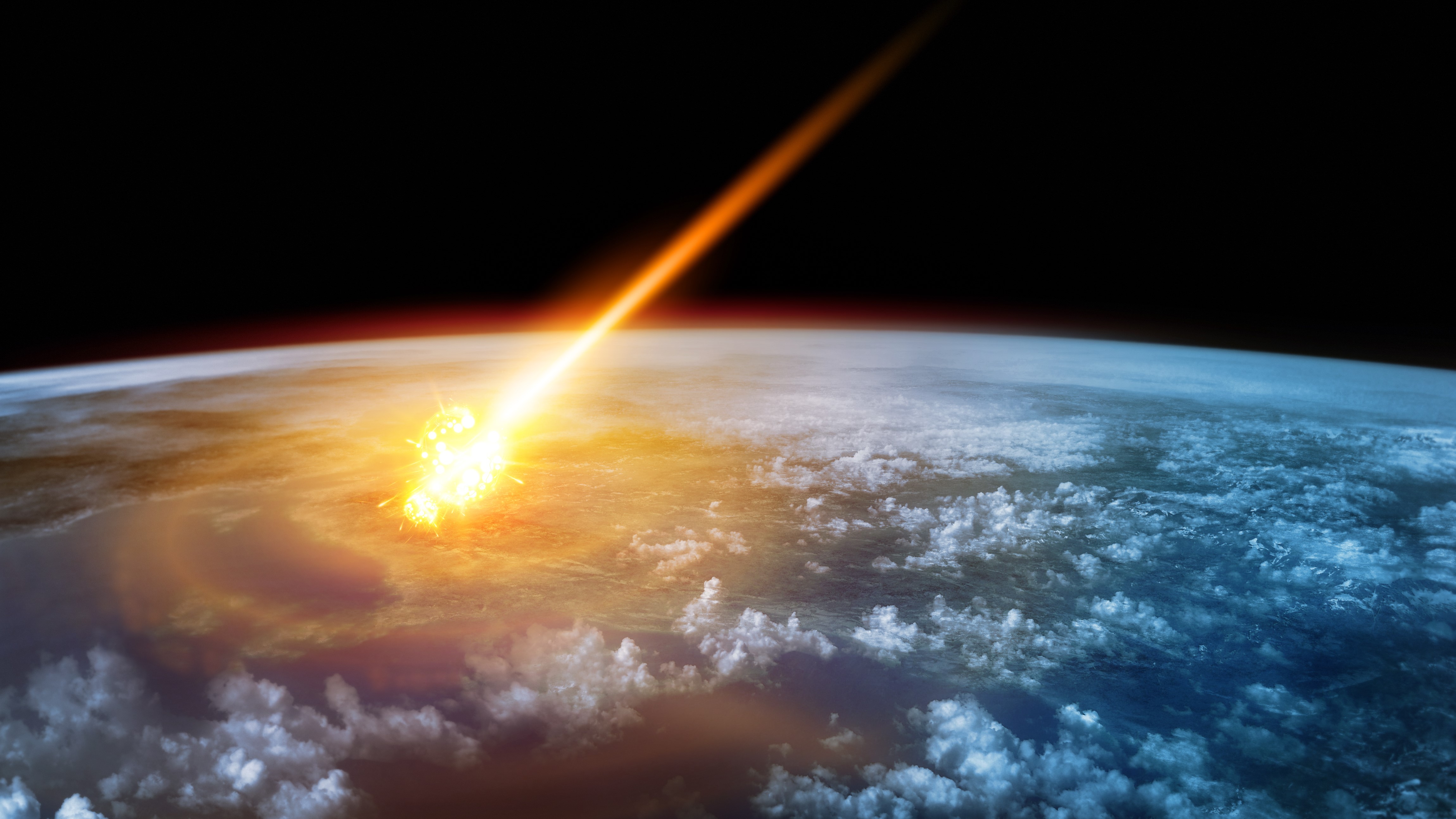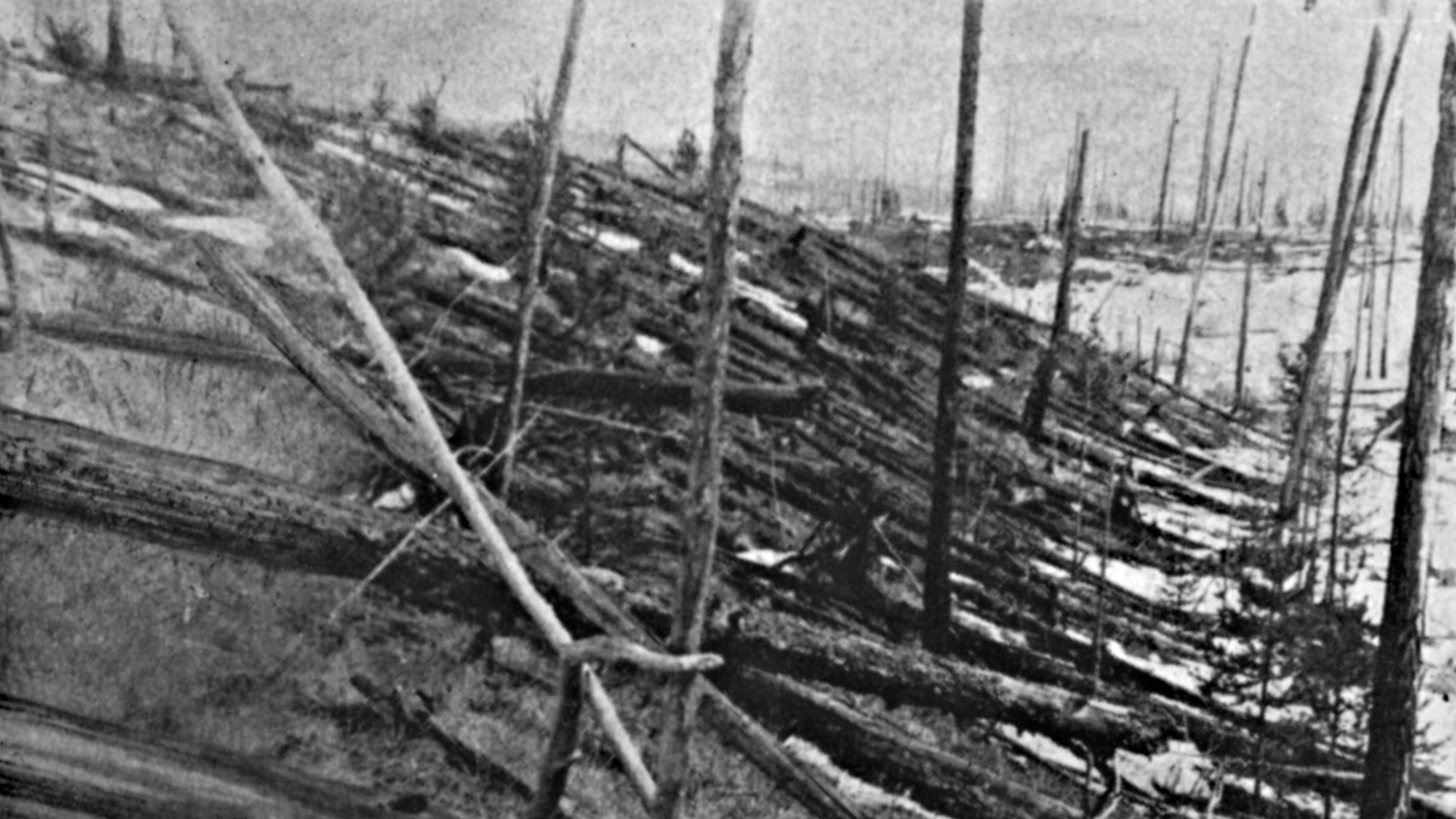The Tunguska event was the biggest asteroid impact in recorded history. How did it vanish without a trace?
During the Tunguska event, over 8 million trees covering an area of 830 square miles were flattened when an asteroid entered Earth's atmosphere.

On June 30, 1908, an asteroid flattened an estimated 80 million trees in Siberia over 830 square miles (2,150 square kilometers). Dubbed the Tunguska event, it is considered the biggest asteroid impact in recorded history. Yet no one has ever found the asteroid fragments or an impact site.
The asteroid lit up the skies in a remote, sparsely inhabited region near the Podkamennaya Tunguska River. It unleashed a 10 to 15 megaton explosion — similar in size to the 1954 Castle Bravo nuclear bomb test, the fifth-largest nuclear detonation in history. "The sky was split in two, and high above the forest the whole northern part of the sky appeared covered with fire," an eyewitness reported.
One popular theory is that the asteroid formed Lake Cheko, a freshwater lake about 5 miles (8 kilometers) from the explosion epicenter. The lake is about 1,640 feet (500 meters) wide and 177 feet (54 m) deep. Luca Gasperini, research director at the National Research Council of Italy, and colleagues said the lake's cone-like shape and depth resembled an impact crater. In a study published 2012 in the journal Geochemistry, Geophysics, Geosystems, they estimated that the sediments at the bottom of the lake had been building for 100 years, while evidence of trees at the bottom of the lake indicate the waterhole covers an old forest.

But some experts were not convinced. In 2017, researchers led by Denis Rogozin, from the Institute of Biophysics at the Siberian Branch of the Russian Academy of Sciences, carried out their own analysis and concluded that lake sediments were at least 280 to 390 years old, "significantly older than the 1908 Tunguska Event."
And in a new study published May 2 in the journal Doklady Earth Sciences, Rogozin and colleagues presented more evidence to refute the idea Lake Cheko is the Tunguska asteroid’s impact site.
Previously, many researchers believed Lake Cheko’s unusual cone shape was unique in the region, giving weight to the idea that an asteroid formed it. But Rogozin and colleagues analyzed two nearby lakes — Zapovednoye and Peyungda — that sit 31 miles (50 km) and 37 miles (60 km) from the suspected impact site. Both are also cone shaped, they found.
Sign up for the Live Science daily newsletter now
Get the world’s most fascinating discoveries delivered straight to your inbox.
"The difference in the age of the lake sediments puts into question the impact origin of these lakes — this would require the arrival of three almost identical space bodies at different times, which is highly improbable given that the lakes are located in almost the same place on Earth," the researchers wrote.
Daniel Vondrák, who studies lake ecosystems at Charles University in Prague, told Live Science in an email that he is convinced by Rogozin's evidence.
However, the conical shape of the lakes isn't the only evidence that Cheko was formed by the Tunguska event, Gasperini said.
In a paper posted to the preprint server arxiv in 2018 (which still has not been peer reviewed), Gasperini and his team hypothesized that Tunguska was caused by a "rubble-pile" asteroid — a structurally weak mashup of fragments from a monolithic asteroid.. As a result, the asteroid split into two pieces — one around 197 feet (60 m) wide, the other around 20 to 33 feet (6 to 10 m) wide. The smaller of these two smashed into Earth, forming Lake Cheko, they wrote.
The team detected a 33-foot-wide (10 m) anomaly at the bottom of the lake that may be a leftover fragment of the asteroid. By drilling to the lake center, someone could test the composition of the anomaly to confirm that hypothesis. However, Gasperini's team can no longer access the site due to the war in Ukraine.
"The Russian scientists could easily do this test, instead of continuing to publish articles showing data similar to ours with very questionable interpretations," Gasperini told Live Science in an email.
What could have happened to the asteroid?
If Cheko wasn't formed by the Tunguska impact crater, then what happened to the asteroid that set fire to the skies more than a century ago? A paper published in 2020 in the journal Monthly Notices of the Royal Astronomical Society suggested a large iron asteroid passed through Earth's atmosphere, then curved away from Earth without breaking up. This, the team said, would explain why no trace of the asteroid has ever been found.
Another paper posted to arxiv last month put forward yet another hypothesis — that the asteroid broke apart and scattered across the landscape. While many fragments would have burnt up in the atmosphere, the team said smaller chunks could have survived and hit Earth over a "strewn field.". This paper suggests rocks from the asteroid could be about 10 to 12 miles (16 to 19 km) northwest of the epicenter, "even if the mud and vegetation could have made any trace disappear."

Hannah Osborne is the planet Earth and animals editor at Live Science. Prior to Live Science, she worked for several years at Newsweek as the science editor. Before this she was science editor at International Business Times U.K. Hannah holds a master's in journalism from Goldsmith's, University of London.










